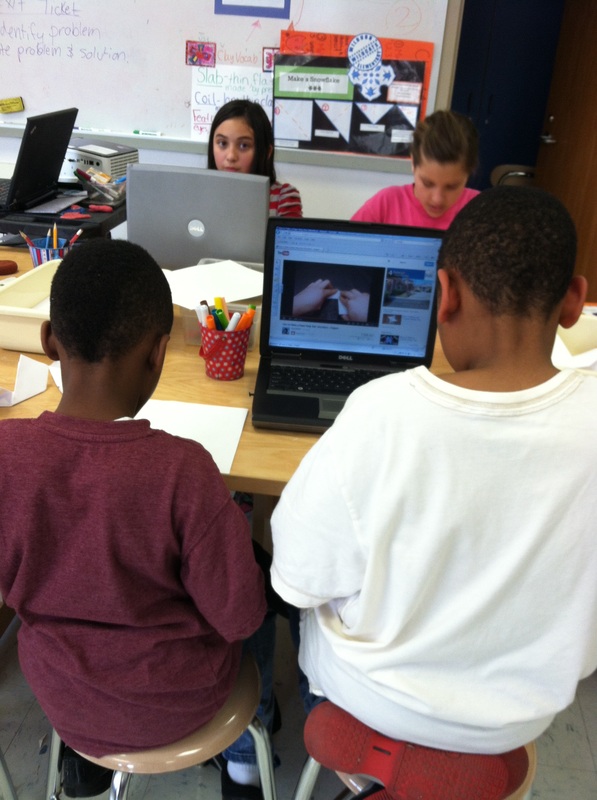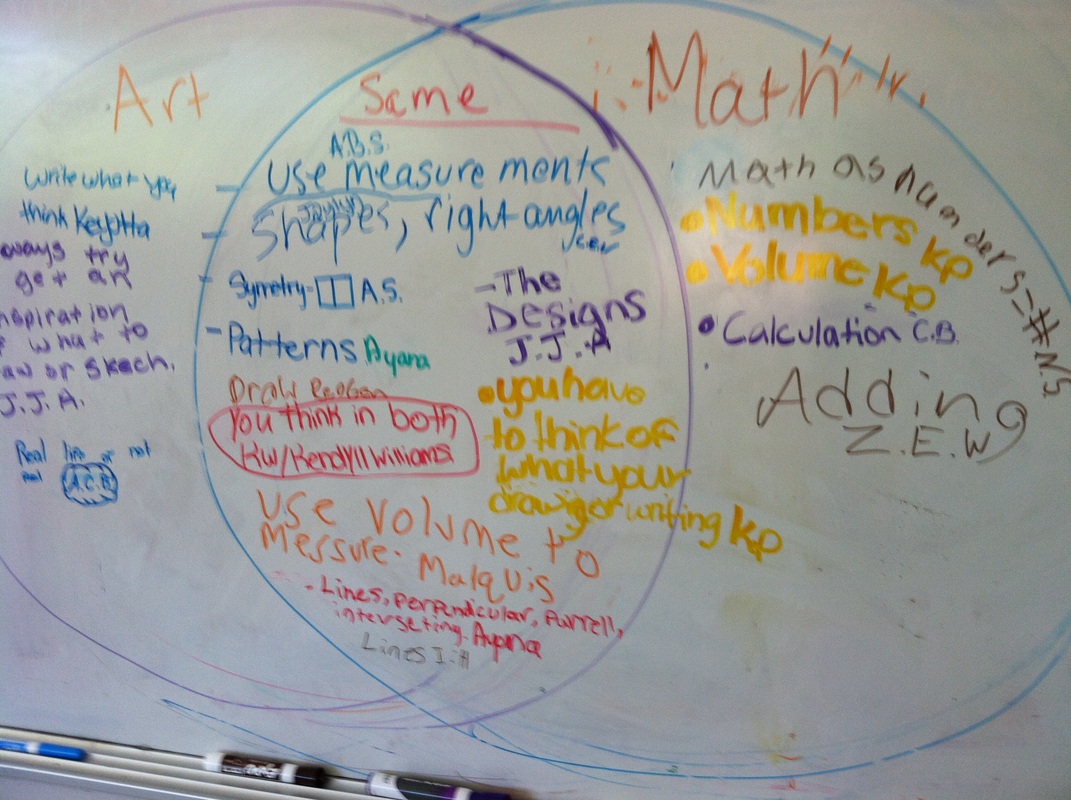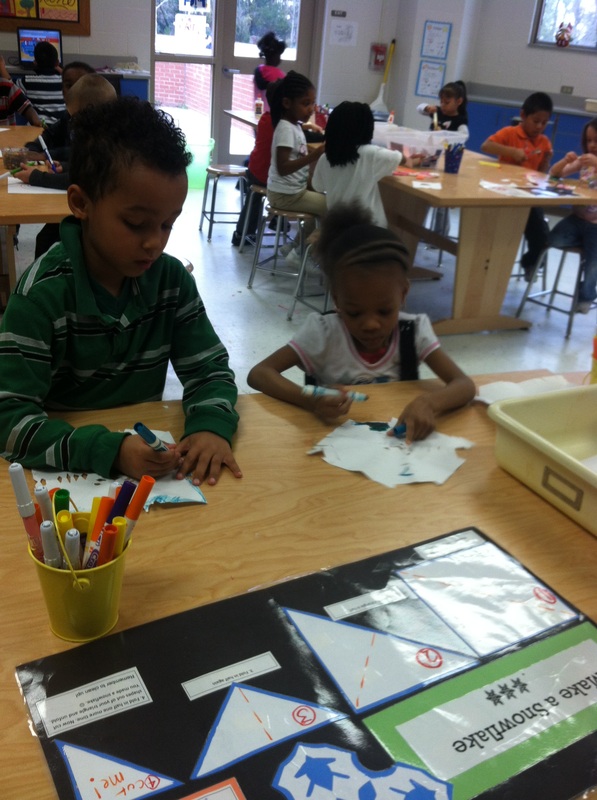|
A common misunderstanding of TAB is that it's a free for all. It's not. I mentioned in previous posts that I started my elementary TAB program in a school where I was observed daily. The expectation was that my teaching was based on state standards and that I was never more than one day off the county pacing guide. It was also expected that I clearly show student growth and mastery of standards. Here a some things I did that worked for me: - I started my planning by going through the standards at each grade level and dividing them into two groups. One group consisted of standards that would be met by everyday center work. So, using the North Carolina Essential Standards for grade 5, things like "create art that reflects personal voice and choice", "apply the Principles of Design in creating compositions","evaluate solutions to artistic problems, including their effectiveness" and "evaluate how to manipulate tools safely and appropriately to reach desired outcomes" could all be taught and assessed through student work in centers. To facilitate this I created an extensive list of questions to use for assessment. To assess manipulating tools I might ask "Tell me about what tool you used to make this. How did you use it to make your art? Why did you pick it?" These questions were listed with the standards in a sort of "base" lesson plan for each grade for standard center work. I also compiled a collection of evaluation rubrics with learning goals written in student friendly terms, like this one for manipulating tools: 5.V.3.1: Evaluate how to manipulate tools safely and appropriately to reach desired outcomes.
- The second group of standards were those that were not taught as a normal part of centers. For these I used mini lessons in the start of class to teach the standards and assessed them during work time, weaving assessment in to student's own work. I organized these mini lessons into units of study, centered around a central theme. For example, in a unit centered around the idea of how art connects with other subjects I might teach a mini lesson one week about how patterns are important in both math and art. During work time I might ask students to compare and contrast math and art using a visual organizer to record and share their personal connections.
- Self-assessment was something that worked well for student's learning, especially with process. Command charts, lists of steps or videos of processes were all incorporated as tools for students to use as tools to check learning or revisit needed information.
3 Comments
Jennifer
10/22/2014 12:39:34 pm
Would you be willing to share more examples of your evaluation rubrics you had created? It is so helpful to read through your examples of student-friendly language!
Reply
Jennifer
10/22/2014 12:41:41 pm
Would you be willing to share more examples of your evaluation rubrics?
Reply
Mrs Syrja
10/23/2014 01:14:34 am
I would also like hear more about the method.
Reply
Your comment will be posted after it is approved.
Leave a Reply. |
Mrs. PurteeI'm interested in creating a student student centered space for my high school students through choice and abundant opportunity for self expression. I'm also a writer for SchoolArts co-author of The Open Art Room. Archives
December 2019
Categories
All
|



 RSS Feed
RSS Feed
